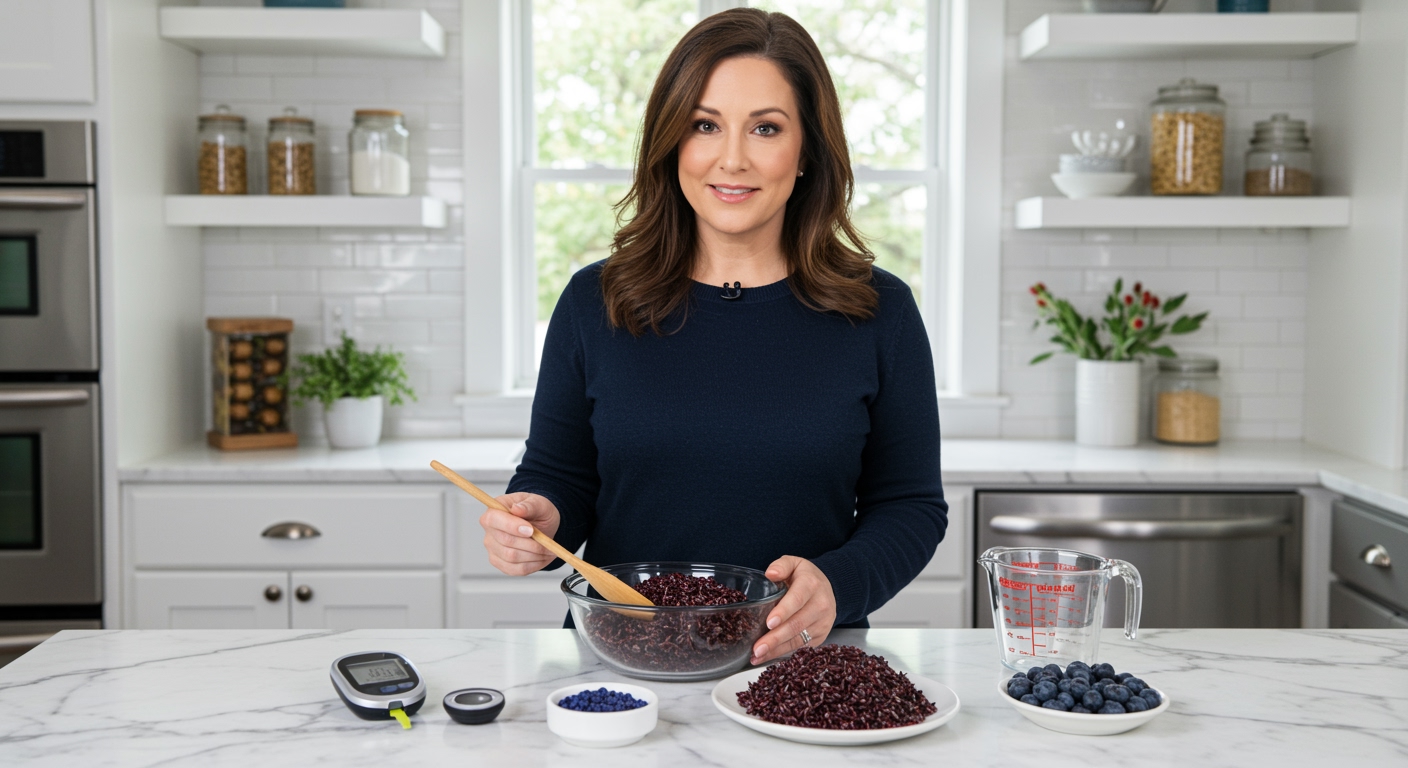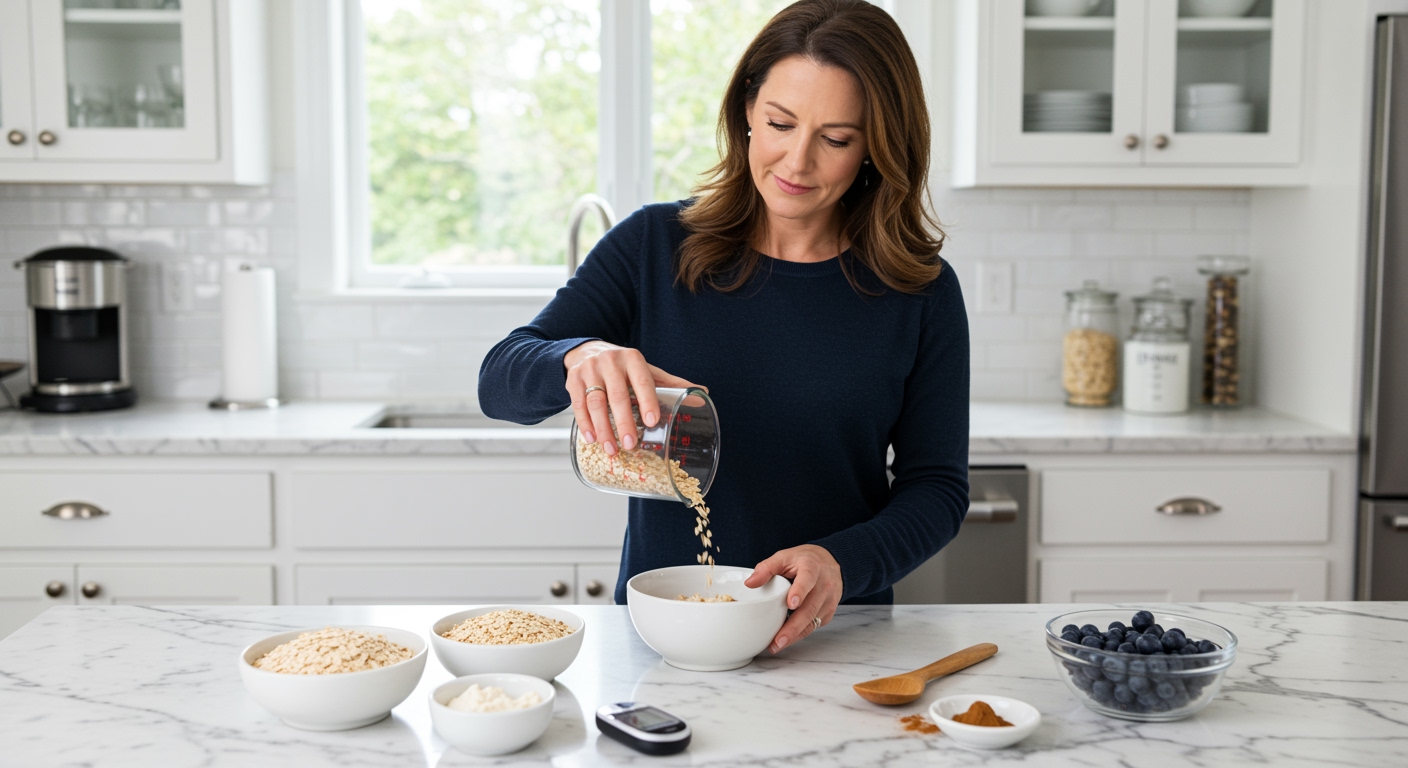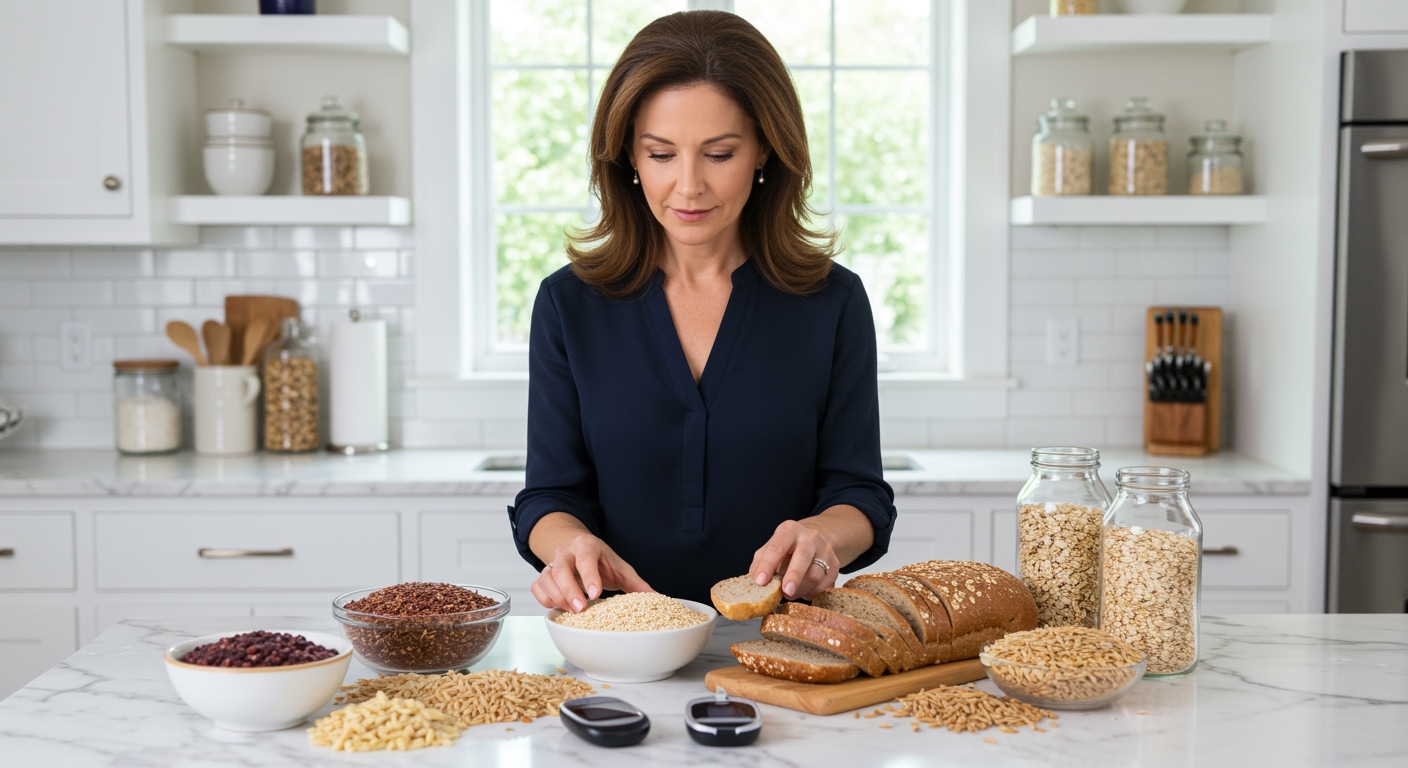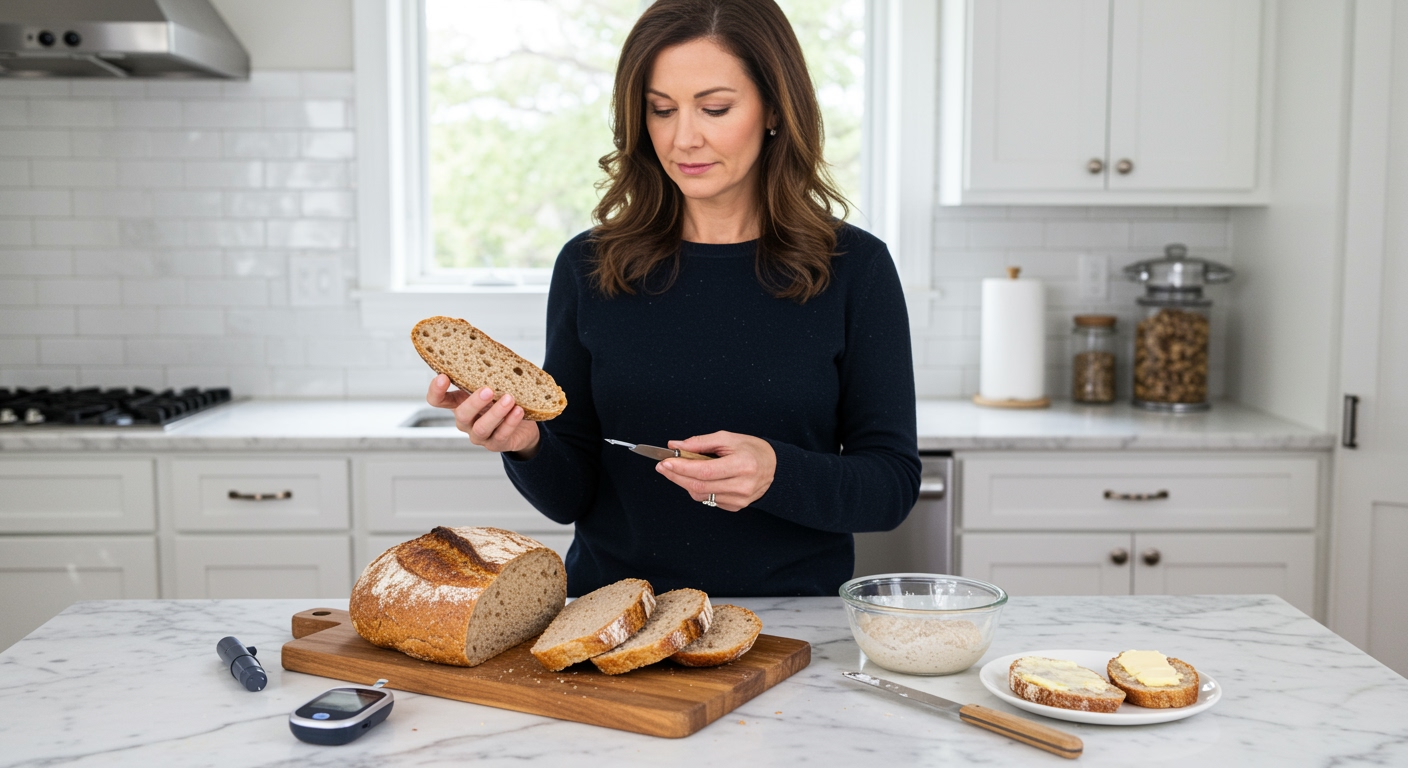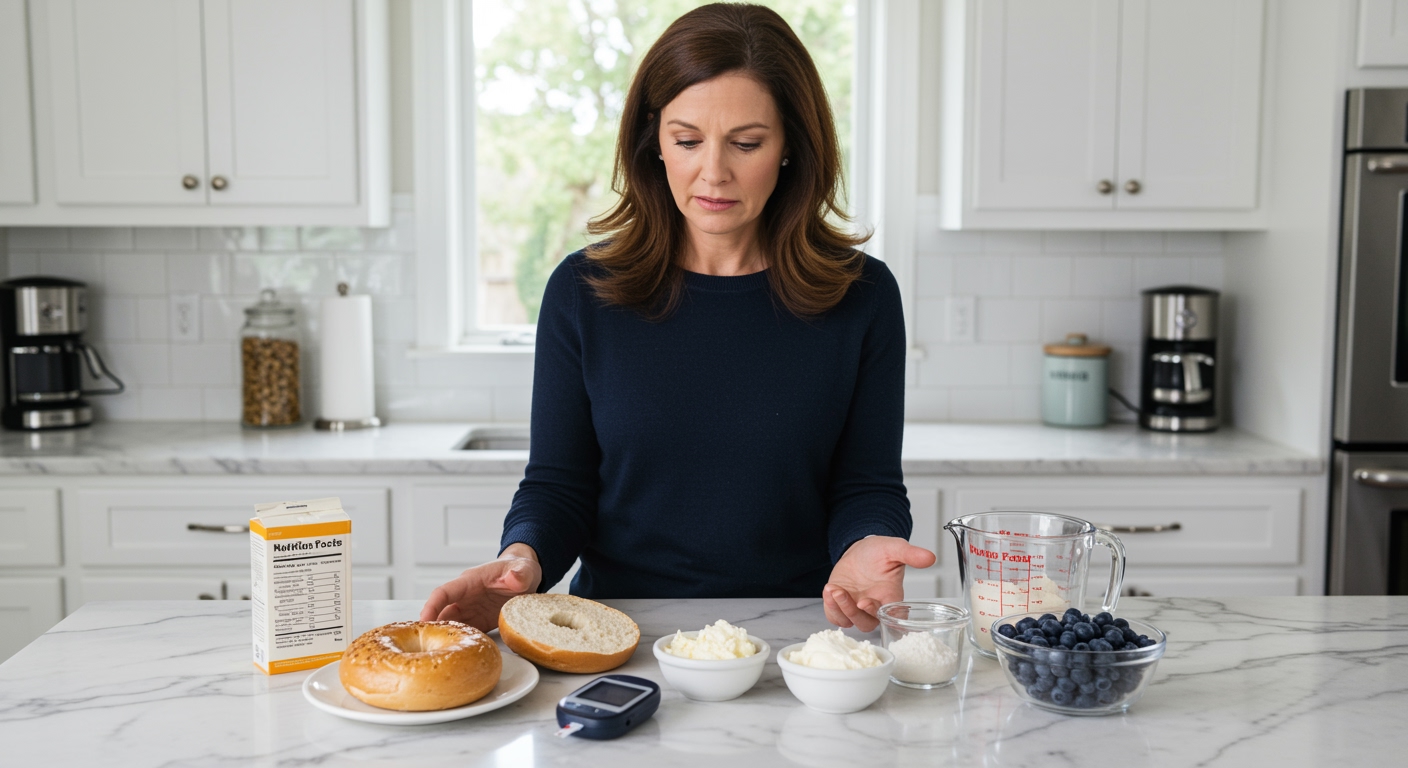✪ Key Takeaway: Black rice is excellent for diabetes with a low glycemic index of 42-45 and powerful antioxidants that help control blood sugar.
Introduction
You walk down the rice aisle and spot something unusual – dark, almost purple grains that look nothing like your regular white rice.
If you have diabetes, you probably wonder whether this exotic-looking grain will spike your blood sugar or actually help control it.
Hi, I am Abdur, your nutrition coach and today I am going to explain everything you need to know about black rice and diabetes management.
What Makes Black Rice Different From White Rice?
Black rice gets its dark color from anthocyanins, the same powerful antioxidants found in blueberries and blackberries.
Unlike white rice, black rice keeps its bran layer intact during processing.
This bran layer contains fiber, protein, and essential nutrients that get stripped away from white rice.
The fiber content in black rice is significantly higher – about 4.9 grams per cooked cup compared to just 0.6 grams in white rice.
This fiber acts like a protective barrier that slows down how quickly your body absorbs the carbohydrates.
The protein content is also higher in black rice, which further helps stabilize blood sugar levels after meals.
✪ Fact: Black rice was once called forbidden rice because only Chinese emperors were allowed to eat it.
How Does Black Rice Affect Blood Sugar Levels?
The glycemic index of black rice ranges from 42 to 45, which puts it in the low glycemic category.
White rice, by comparison, has a glycemic index of 73, making it a high glycemic food that causes rapid blood sugar spikes.
When you eat black rice, the fiber content forms a gel-like substance in your digestive system.
This gel slows down the breakdown and absorption of carbohydrates, leading to a more gradual rise in blood glucose.
The anthocyanins in black rice also play a role in blood sugar control by improving insulin sensitivity.
Research shows these compounds help your cells respond better to insulin, making it easier for glucose to enter your cells instead of staying in your bloodstream.
✪ Pro Tip: Cook black rice with a pinch of cinnamon to further enhance its blood sugar benefits.
What Are The Antioxidant Benefits For Diabetics?
Black rice contains more antioxidants than blueberries, making it a powerhouse for fighting diabetes-related complications.
The anthocyanins in black rice help protect your blood vessels from damage caused by high blood sugar levels.
Diabetes often leads to oxidative stress, which damages cells throughout your body, especially in your eyes, kidneys, and nerves.
The antioxidants in black rice neutralize these harmful free radicals before they can cause damage.
Studies show that regular consumption of anthocyanin-rich foods can reduce inflammation markers in people with diabetes.
This anti-inflammatory effect helps protect against diabetic complications like heart disease, kidney problems, and nerve damage.
The vitamin E content in black rice also supports immune function, which is often compromised in people with diabetes.
✪ Note: The deeper the color of your black rice, the higher its antioxidant content.
How Much Black Rice Should Diabetics Eat?
A reasonable portion size for black rice is about one-third to one-half cup of cooked rice per meal.
This portion contains approximately 15-22 grams of carbohydrates, which fits well within most diabetic meal plans.
The key is to pair black rice with protein and healthy fats to further slow down glucose absorption.
Try combining it with grilled chicken, fish, or tofu along with plenty of non-starchy vegetables.
Timing also matters – eating black rice earlier in the day gives your body more time to process the carbohydrates.
Monitor your blood sugar response when you first introduce black rice to understand how your body reacts.
Some people may need smaller portions initially while others can tolerate larger amounts without significant blood sugar spikes.
✪ Pro Tip: Start with a quarter cup serving and gradually increase based on your blood sugar readings.
Are There Any Risks Or Side Effects?
Black rice is generally safe for diabetics, but there are a few considerations to keep in mind.
The higher fiber content might cause digestive discomfort if you increase your intake too quickly.
Start with small portions and gradually increase your intake over several weeks to allow your digestive system to adjust.
Some people experience bloating or gas when they suddenly add high-fiber foods to their diet.
Black rice is still a carbohydrate-containing food, so it will affect your blood sugar levels to some degree.
Never assume that any food, even healthy ones like black rice, can be eaten in unlimited quantities without consequences.
Always work with your healthcare provider to determine the right amount of carbohydrates for your individual needs and medication regimen.
The Bottom Line
Black rice is an excellent choice for people with diabetes due to its low glycemic index, high fiber content, and powerful antioxidants.
Smart food swaps like choosing black rice over white rice can make a real difference in your daily blood sugar control without sacrificing taste or satisfaction.
I would love to hear about your experience with black rice or any questions you might have about managing diabetes through nutrition – please share your thoughts in the comments below.
References
At NutritionCrown, we use quality and credible sources to ensure our content is accurate and trustworthy. Below are the sources referenced in creating this article:
- PubMed: Anthocyanins and diabetes management
- Frontiers in Pharmacology: Black rice antioxidant properties
- Signos: Black rice glycemic index
- Healthline: Black rice nutrition benefits
